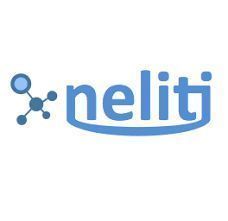BELAJAR BAHASA INGGRIS SEBAGAI BAHASA ASING MELALUI KOMUNIKASI SOSIAL DI MEDIA SOSIAL: PERSPEKTIF PEMBELAJAR
Abstract
Keywords
Full Text:
PDFReferences
Anjarwati R, Sa’adah L. Student learning engagement in the online class. EnJourMe. 2021 Dec 28;6(2):39–49.
. Dor D. The Instruction of Imagination Language as a Social Communication Technology. The United States of America: Oxford University Press; 2015.
. Dettori G, Torsani S. Enriching Formal Language Learning with an Informal Social Component. 2013;
. Hamid S, Waycott J, Kurnia S, Chang S. Understanding students’ perceptions of the benefits of online social networking use for teaching and learning. The Internet and Higher Education. 2015 Jul;26:1–9.
. Sa’adah L, Anjarwati R. EFL Teachers’ and Learners’ Perspective on Teachers’ Online Written Feedback. jeell. 2021 Sep 1;8(1):26.
. Chvanova MS, Hramov AE, Khramova MV, Pitsik EN. Is it possible to improve the university education with social networks: The opinion of students and teachers. In: 2016 IEEE Conference on Quality Management, Transport and Information Security, Information Technologies (IT&MQ&IS) [Internet]. Nalchik, Russia: IEEE; 2016 [cited 2023 Apr 2]. p. 33–8. Available from: http://ieeexplore.ieee.org/document/7751895/
. Giannikas C. Facebook in tertiary education: The impact of social media in e-Learning. JUTLP. 2020 Jan 1;17(1):23–36.
. Anjarwati R. The Effect of Peer Feedback on Students’ Writing. SELL Journal. 2017;2(2):137–44.
. Greenhow C, Lewin C. Social media and education: reconceptualizing the boundaries of formal and informal learning. Learning, Media and Technology. 2016 Jan 2;41(1):6–30.
. Li V. Social Media in English Language Teaching and Learning. IJLT [Internet]. 2017 [cited 2023 Apr 1]; Available from: http://www.ijlt.org/index.php?m=content&c=index&a=show&catid=123&id=578
. Rinaldy Malik A, Ashar Asnur MN. Using Social Media as a Learning Media of Foreign Language Students in Higher Education. E-ISSN 2540-8968 [Internet]. 2019 Jul 29 [cited 2023 Apr 1];18(2). Available from: http://journal.unj.ac.id/unj/index.php/bahtera/article/view/11611
. Sharma DV. Saudi Students’ Perspective on Social Media Usage to Promote EFL Learning. 2019;
. Pikhart M, Botezat O. The Impact of the Use of Social Media on Second Language Acquisition. Procedia Computer Science. 2021;192:1621–8.
. Lee SM. The relationships between higher order thinking skills, cognitive density, and social presence in online learning. The Internet and Higher Education. 2014 Apr;21:41–52.
. Pursel BK, Xie H. Patterns and Pedagogy: Exploring Student Blog Use in Higher Education. CONTEMP EDUC TECHNOL [Internet]. 2014 Jun 1 [cited 2023 Apr 1];5(2). Available from: https://www.cedtech.net/article/patterns-and-pedagogy-exploring-student-blog-use-in-higher-education-6118
. Kuo YC, Walker AE, Schroder KEE, Belland BR. Interaction, Internet self-efficacy, and self-regulated learning as predictors of student satisfaction in online education courses. The Internet and Higher Education. 2014 Jan;20:35–50.
. Anjarwati R, Sa’adah L. The Effect of Combining Google Classroom and Whatsapp on Student Engagement in English Class. EJ. 2022 Dec 31;9(2):152.
. [18] Maidiana. Penelitian Survey. ALACRITY: Journal of Education. 2021 Jun;1(2):20–9.
. Islamy I. Penelitian Survei dalam Pembelajaran dan Pengajaran Bahasa Inggris. 2019;
. Miles MB, Huberman AM, Saldaña J. Qualitative data analysis: a methods sourcebook. Third edition. Thousand Oaks, Califorinia: SAGE Publications, Inc; 2014. 381 p.
Refbacks
- There are currently no refbacks.
Copyright (c) 2023 Prosiding Conference on Research and Community Services





